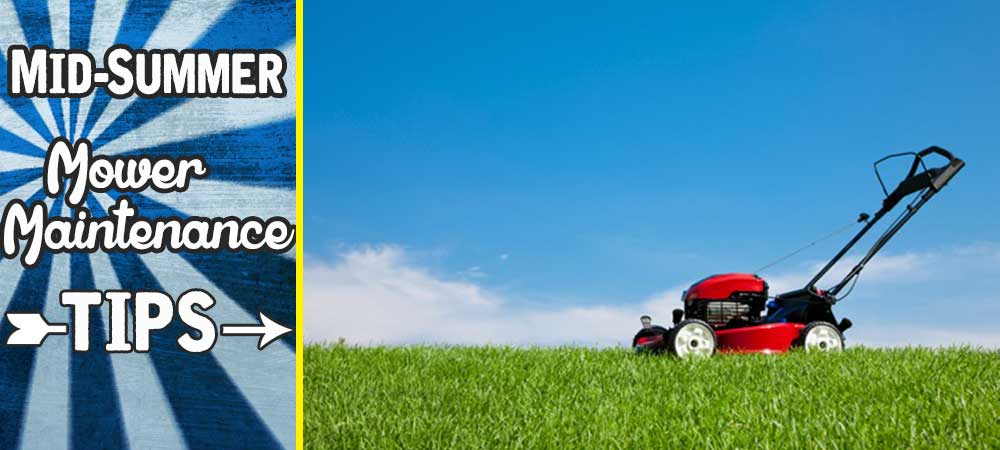
Top 5 Best Accessories for your Exmark Lawn Mower
Top 5 Exmark Lawn Mower Accessories
If you have an Exmark Lawn Mower, then you already know how great it is. It’s not hard to fall in love with an Exmark mower. Between Exmark’s tremendous engineering, quality and intuitive controls, it’s not hard to see why Exmark is ahead of the class in commercial and residential lawn mowing. Along with Exmark’s amazing performance, they even have a few accessories that can instantly improve your mowing experience. If you would like to take your cutting to the next level, then check out these awesome Exmark Lawn Mower Accessories.
 5. 12 Volt Adapter
5. 12 Volt Adapter
This 12 Volt Adapter lets you power anything you might need while you’re mowing. This is an absolute must-have for any operator. Whether you’re charging your phone, GPS or any other accessory, this adapter is a necessity. It’s also conveniently located to make it easy to access during operation.
 4. Trash Container Kit
4. Trash Container Kit
You don’t have time to stop and worry about debris while you’re mowing. And now you don’t have to! The Exmark Trash Container Kit allows you to pick up any trash or debris and throw it away on the go – in no time at all. This container is conveniently located within arm’s reach of the operator. It features a 2.5 Gallon capacity basket with durable, easy to clean, mesh material.
 3. UltraVac Bagger Collection System
3. UltraVac Bagger Collection System
The Exmark UltraVac Bagger Collection System takes your yard to the next level of quality. This bagger collects all excess debris into the hopper with every pass, which leaves behind a neat, crisp appearance. Along with picking up any grass clippings, bagger systems are also great at picking up leaves in the fall, making your lawn look flawless.
The Exmark UltraVack Bagger collection system also features quick-attach capabilities, which allow you to easily switch between side discharge and bagging. Plus, only Exmark’s bagging system features a wide diameter tube that helps reduce clogging.
 2. Operator Control Discharge
2. Operator Control Discharge
When mowing around sensitive objects like cars, windows, and mulch beds, you know that every second counts. The operator control discharge system allows you to quickly and easily operate the discharge chute. This awesome accessory is compatible with any Exmark Lazer Z or Vantage Lawn Mower. This is a must-have accessory – especially for landscape professionals.
 1. Turf Striper Kit
1. Turf Striper Kit
Have you ever been at a baseball game and paid attention to the outfield? Most ballparks use a really neat looking striping effect for their outfield grass. This gives the lawn a beautiful, professional look. Well, now lawn stripes aren’t just for the ballpark. With the Exmark Turf Striper Kit, you can have that fresh, ballpark look right in your own backyard.
These striping kits attach to existing mounting points, which makes installation quick and easy. The innovative design makes it easy for you to service the striper kit, which will make sure that it lasts season after season.

 1. Prune Trees
1. Prune Trees 2. Aerate your Lawn
2. Aerate your Lawn 3. Edge Sidewalks
3. Edge Sidewalks 4. Mulch your Lawn
4. Mulch your Lawn 5. Sharpen your Mower Blades
5. Sharpen your Mower Blades
 PRO TIP: Save water and use an air compressor to get rid of debris quickly! If you don’t have an air compressor, a
PRO TIP: Save water and use an air compressor to get rid of debris quickly! If you don’t have an air compressor, a  2. Tighten Bolts and Hardware
2. Tighten Bolts and Hardware 3. Change the Air Filter
3. Change the Air Filter 4. Check the Blades
4. Check the Blades

 1. Disconnect the Spark Plug
1. Disconnect the Spark Plug

 Change the Spark Plug
Change the Spark Plug
 What is Overseeding?
What is Overseeding?


 Dethatching:
Dethatching: Vacuuming:
Vacuuming: Overseeding
Overseeding